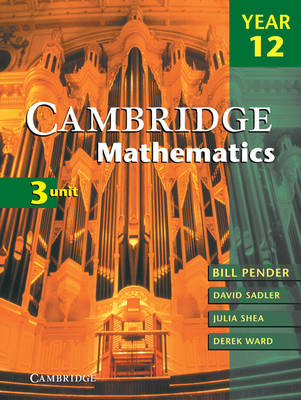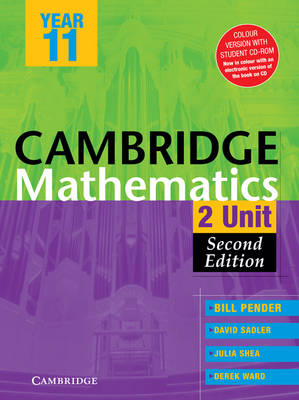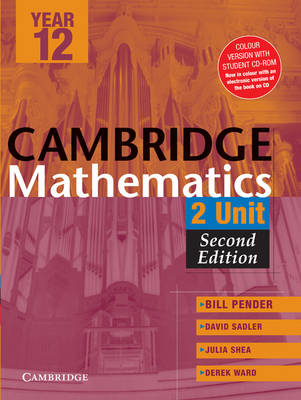Cambridge Secondary Maths (Australia)
4 total works
Cambridge 3 Unit Mathematics Year 12
by William Pender, Derek Ward, Julia Shea, and David Sadler
Published 12 October 2000
Cambridge Mathematics 3 Unit Year 12 spans the full range of NSW 3 Unit Mathematics students' abilities. In each exercise, the book provides a large number and a great variety of questions that are carefully graded and range from quite easy to very demanding. The book provides links to other topics and requirements for explanation in the style of recent HSC papers and is designed to expand and develop the wide range of student abilities through extensive and aptly graded exercises. There is a large number of fully worked examples and theory is logically developed and clearly explained. Chapters are systematically divided into manageable sections which consist of a substantial exercise preceded by theory and worked examples. The exercises are divided into three groups: foundation, development, and extension.
Cambridge 2 Unit Mathematics Year 11 Colour Version with Student CD-ROM
by William Pender, David Saddler, Julia Shea, and Derek Ward
Published 21 October 1999
Now in colour with an electronic version of the book on CD. Completely revised to address the needs of ALL students. This Second Edition of Cambridge Mathematics 2 Unit Year 11 has been thoroughly reworked to ensure the book is accessible to all students undertaking the 2 Unit course called 'Mathematics' in the New South Wales HSC.
Cambridge 2 Unit Mathematics Year 12 Colour Version with Student CD-ROM
by William Pender, David Saddler, Julia Shea, and Derek Ward
Published 31 August 2009
Now in colour with an electronic version of the book on CD. Completely revised to address the needs of ALL students. This Second Edition of Cambridge Mathematics 2 Unit Year 12 has been thoroughly reworked to ensure the book is accessible to all students undertaking the 2 Unit course called 'Mathematics' in the New South Wales HSC.
Cambridge 2 Unit Mathematics Year 12
by William Pender, Derek Ward, Julia Shea, and David Sadler
Published 12 October 2000
Cambridge Mathematics 2 Unit Year 12 develops theory for the Mathematics 2 Unit Year 12 syllabus both thoroughly and logically through clear explanations. It spans the full range of students' abilities with a large number of questions that are carefully graded and range from quite easy to more demanding. They will provide sufficient work for students of every ability taking the course. The gradual changes of emphasis in HSC examinations over the last ten years have been carefully addressed by the authors. The authors also encourage mathematical imagination through careful exposition and interesting questions, and by relating the various topics. Chapters are systematically divided into manageable sections which consist of a substantial exercise preceded by theory and worked examples. The exercises are then divided into three groups: Group 1 for more straightforward algorithms, Group 2 for harder algorithms and Group 3 for problems that link to other topics.



